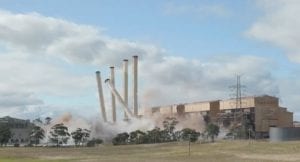The story of the second half of 2019 in the Victorian Energy Efficiency Certificates (VEEC) market has been one of anticipation – mostly around the proposed consultation process for the next phase of scheme targets.
Despite a seemingly never-ending series of let downs, VEEC prices continued to climb.

Target expansions are always important matters in environmental markets, with a trajectory for future growth or contraction usually among the most pivotal of issues for the markets.
For the VEEC market it was no different, with the consultation for the next phase of targets (2021-2025) having been strongly anticipated since the middle of the year.
This time around however, the Regulatory Impact Statement being prepared by the Department was likely to address several additional matters that may have been just as significant.
Firstly, the Department has been signalling for some time that LED lighting upgrades, the mainstay of VEEC creation in recent years, are increasingly becoming business-as-usual activities and hence, the question of whether the scheme should continue to incentivise them at the same rate has been repeatedly mooted.
A reduction in the number of VEECs per install would push up the cost of VEEC creation and reduce VEEC supply, but questions of whether the Department would want to do this at a time of potential target expansion, without any obvious substitute for supply appear valid.
Schedule 21 A, which has over the last six months become the leading source of creation, has also been rumoured to be the focus of some attention, with questions of whether the calculation to determine how many VEECs are received per install has been too generous.
The project based activities methodology (such as measurement and verification or building ratings) has long been the poster child for regulators in both Victoria and NSW future supply aspirations, with the hope that the more complex and thorough approach could replace the cruder deeming method used by the dominant lighting upgrades methodologies.
The trouble is simply that the methodology’s ability to scale is severely hamstrung by the hefty cashflow burden that comes with it.
Participants first have to measure consumption over an extended period, then undertake upgrades, before measuring actual savings over another extended period, before the benefit of any cashflow from certificate creation emerges.
Financing this activity for 12 months or more is simply beyond the reach of most creators and unlikely to be appealing to enough customers to fill the lighting void.
One new methodology that has been the subject of speculation over recent months, all the more so since the NSW Minister’s surprise announcement in November about that state’s intentions (see below), is peak demand reduction, or more specifically battery installations.
Peak demand and more importantly the potential for blackouts that may result when demand outstrips supply in the National Electricity Market is the type of thing that keeps Premiers awake at night and has formed the basis for the most recent excuse for calls for the curtailment of renewable energy deployment at the hands of the federal energy minister.
Solving the issue is the type thing that can avoid the building of costly new power stations that may only run on a small number of days each year.
Utilising the Victorian Energy Upgrades scheme to help solve this issue would make sense, even if it would not be a purely energy efficiency measure.
The easiest option to solve this problem would be to encourage the rollout of storage technologies such as batteries which would charge during times of excess supply (i.e. the middle of the day when solar output is very high) and then run down when extra power is needed (i.e. in the evenings when solar is no longer generating).
With hundreds of thousands (if not millions) of residential and commercial solar installations across the state and a meaningful additional subsidy to encourage uptake, batteries are firming as the hot favourite to replace lighting as the main VEEC supply of the future.
But whether the Victorian Government would seek to introduce a new scheme to incorporate it (as NSW appears set to do), or fold it into the existing market and account for it in the target setting process is yet to be determined.
The swirling discourse surrounding what combination of these issues will prevail has led to much speculation and price movement across the last 6 months.
Yet all the while the market has continued to gradually strengthen, with the spot passing $23 in October and $24 in November on its way to high of $24.85 in the same month.
Frequently during this period activity was led by the forward market with buyers (often creators themselves) paying cost of carry escalations above the spot that were considerably above the funding rates of many of the larger liable parties.
With these trades going through at such high levels the spot market would eventually appear better value for those that could hold and carry certificates and hence activity would then follow.
Interestingly, as can be seen in the chart above, the increase in prices has also coincided with a steady growth in supply, which has come primarily from an increase in Schedule 21A.
From November 2018 until April this year VEEC submissions were well down, averaging only 77k per week, well below the 120k per week that the 2019 target of 6.3m requires (not taking into consideration the VEEC surplus).
Hence across this time there was a significant draw down on that surplus which, in part, likely contributed to the initial increases in prices.
In the period since early June however, weekly VEEC submissions have climbed and have averaged 133k, thus once again growing the surplus on a weekly basis by circa 12k each week.
By the end of November after the 2019 target of 6.3m, there were 3.7m additional VEECs either registered or pending registration, with another 8 weeks left for submissions to be eligible for 2019 compliance.
By that point, the surplus will likely be at or above 4.5m. If that is the case, the VEEC surplus will have contracted circa 800k from the same period in 2018.
New South Wales Energy Savings Certificates (ESCs)

Increasing prices, a predicted slow down in ESC registrations following June’s bulk approvals and a shock announcement on the expansion of the scheme have characterised the ESC market across the second half of 2019.
The April to June period in the ESC market, as is often the case, proved a big one for ESC creations.
Unsurprisingly, the 3 months that followed saw a consistently lower rate of creation, with the spot market finally breaking free of the $20.00-$21.50 range that had bound it for close to six months in late August.
Having tipped past $22.00 the market was generally stable at that level across the following 3 months until the state’s energy Minister Matt Kean dropped a bombshell at the first meeting of COAG energy ministers since the election in late November.
Unlike the VEEC market which has had half a year to prognosticate as to the intentions of the Victorian government, the ESC market was caught unawares when Energy Minister Kean announced his government’s plans for the expansion of the ESC scheme and the creation of a new, seemingly separate scheme for peak demand reductions technologies.
The policy as it stands is to extend the life of the Energy Savings Scheme (now to be rebranded, in a flourish of marketing genius, as the Energy Security Safeguard) to 2050, with an expanded target that takes us from the current peak of 8.5% of relevant energy sales in 2019 to 13% by 2030.
There is no indication as to when the increase in the target will begin or what trajectory will be followed.
The government says it intends to add new methodologies to the scheme, though there is no also indication of what they would be.
A new scheme, presumably with its own new targets and specific prescriptions around creation methodologies is to be developed aimed at facilitating peak demand reduction.
The issue is one of the principal concerns for the future of the NEM with the growing transition away from fossil fuel generation and into renewables.
Specifically targeted will be technologies such as batteries, smart pool pumps and electric vehicle charging infrastructure which could be used to reduce demand at pivotal times, thus preventing the roll out of more costly investment alternatives.
The move both opens a new frontier in the energy transition whilst illustrating just how pedestrian the federal government has been in its energy policy development.
After the news the spot ESC market shot up, reaching a high of $24.75, a level not seen since August 2018.
The forward market was particularly busy with many strips for the second half of the year agreed at $25.00, before the market eventually began to soften a little, with Jan-Dec20 strips eventually agreed down to $24.65.










